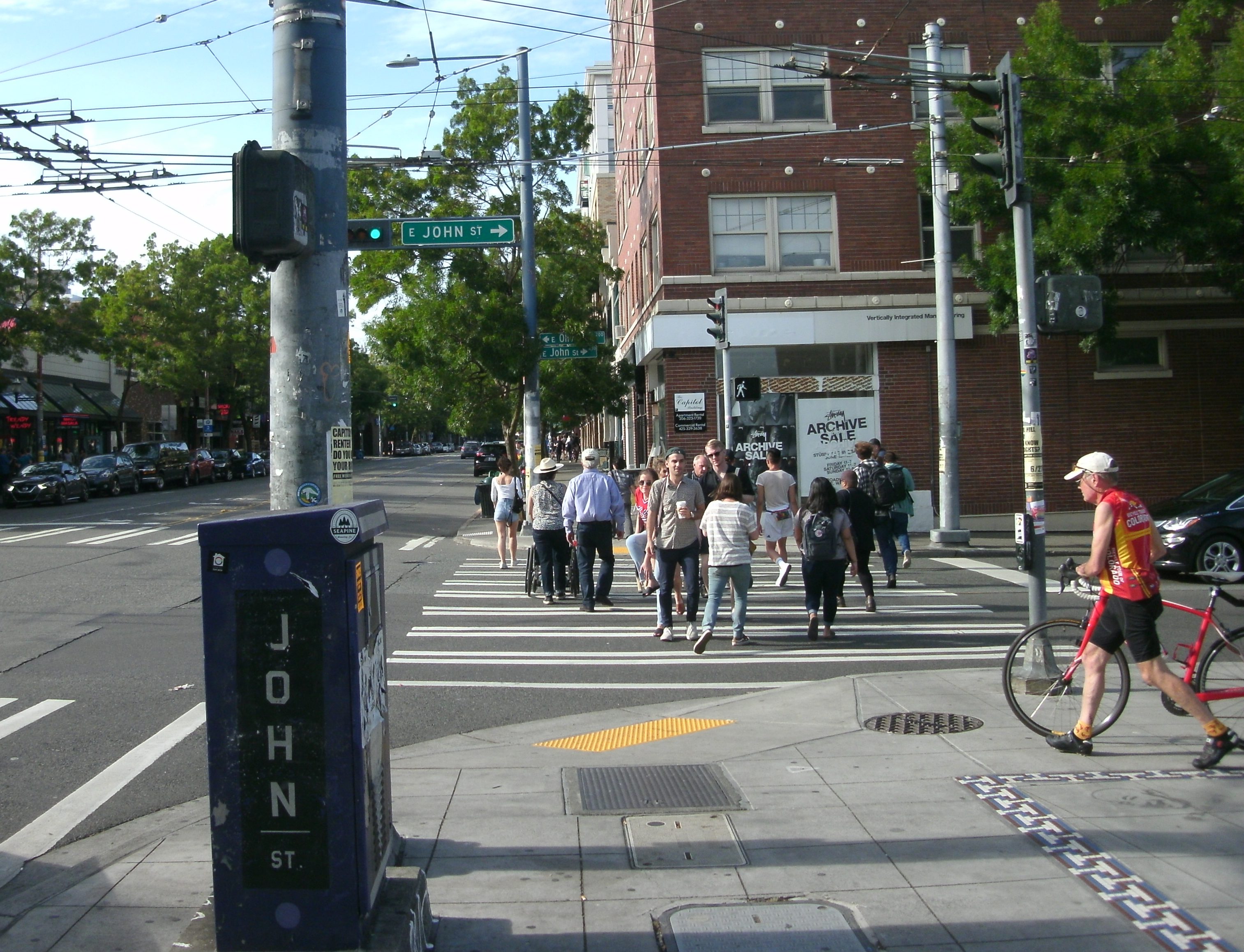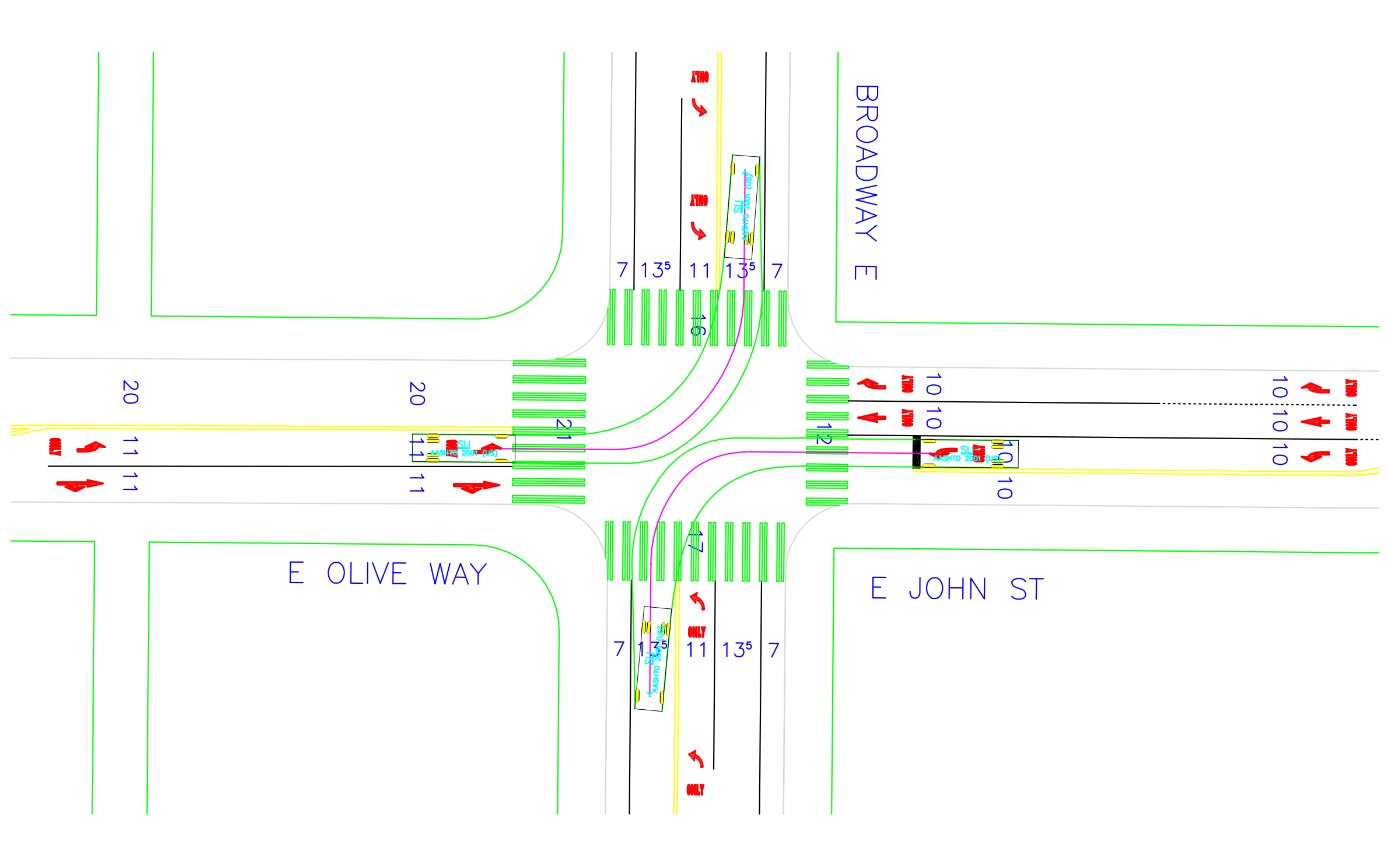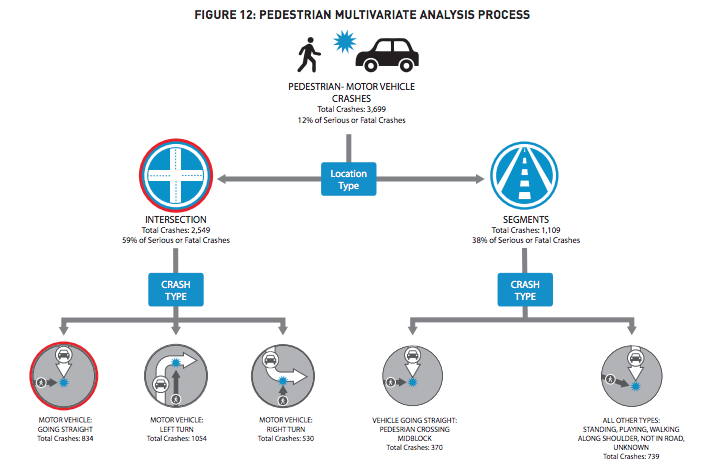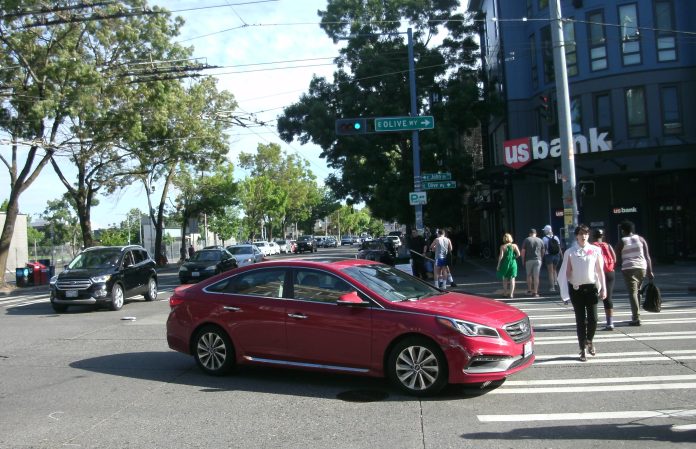The busiest City-controlled corridor for vehicle traffic in Seattle is the West Seattle bridge, which carried over 108,000 cars on an average day in 2016. For people on bikes, the busiest place in the city is the Fremont bridge, which saw an average of 2,600 cyclists per day that year. And the most bustling pedestrian thoroughfare in Seattle is Broadway. In 2016, pedestrian counters adjacent to Seattle Central Community College recorded an average daily traffic at Broadway and E Olive Street of 22,539 people. Previous to that year, the Seattle Department of Transportation (SDOT) had recorded Broadway and E Pine Street as the busiest pedestrian intersection in the city for many years, with 23,998 per day recorded on average. Despite the heavy amount of pedestrian traffic downtown around Pike Place Market and the retail core, Capitol Hill concentrates the most walkers through a single corridor on Broadway.
The place where the most vehicle traffic comes into contact with people using Broadway on foot is the corner of Broadway E and E Olive Way. Around 16,000 cars per day use E Olive Way, with around equal numbers using Broadway E north of the intersection. Unlike lower traffic intersections like Broadway and Pine, there are no left turn signals in any of the four directions, so drivers turning must choose when to make their turns around pedestrian traffic.
This intersection has essentially remained unchanged since the day Sound Transit opened a light rail station at the corner in March of 2016: Sound Transit expects 14,000 people per day to use the station by 2030: as of the first quarter of 2018 that number is 7,500. SDOT did install a leading pedestrian interval (LPI) last year which provides pedestrians with an extra several seconds of “walk” signal prior to the signal turning green for vehicles. Right on red is still permitted at all of the corners, but LPIs have been proven to increase pedestrian visibility and by extension reduce collisions. The National Association of City Transportation Officials (NACTO) states that “LPIs have been shown to reduce pedestrian-vehicle collisions as much as 60% at treated intersections.”

But the issue of conflicts between left-turning vehicles and pedestrians using the crosswalk remains a huge problem at this intersection, and after responding to community concerns around pedestrian safety here, SDOT made the decision to install left-turn signals to the traffic lanes heading east/west, on E Olive Way and E John St. This improvement was to be included in a comprehensive corridor improvement to the E John Street corridor east of Broadway that was awarded a Neighborhood Street Fund (NSF) grant in 2016 from a proposal submitted by Central Seattle Greenways volunteer (and current Pedestrian Advisory Board chair) David Seater: it was not funded by the NSF grant but would be treated as part of it.
Now the department is scaling back plans for the signal replacement needed to add left turn arrows, saying that adding them would be cost prohibitive. Instead they propose simply rechannelizing the lanes on the roadway, which are poorly defined currently. According to the department, turn pockets for east-west travel will treat the dominant collision pattern at the intersection: there were 14 collisions involving left turning vehicles over a three-year study period. The only problem is that the lane lines will not dramatically change how the intersection operates now. Vehicle traffic already separates into de facto turn lanes and through lanes, with drivers from the east and the west frequently chosing to turn in between groups of crossing pedestrians, a move that is actually illegal under Washington law (drivers are required to leave one lane width between their vehicle and a crossing pedestrian).
Replacing full signal poles is indeed much more expensive than simply repainting: $250,000 compared to $15,000. But will we need to learn that we were being penny wise and pound foolish when someone is seriously injured or worse?

Seattle has begun to systematically improve safety around people on bikes by ensuring that any new bicycle facility includes fully separated turn cycles so that conflicts are reduced between people driving across a protected bike lane and people biking on it. When the city studied nine years of collision data involving people on bikes, they found that 21.5% of serious and fatal injuries were caused by left hooks, and that data informed the decision making around how protected bike lanes are constructed on such important corridors as 2nd Avenue and 7th Avenue. Restrictions on right-turn-on-red has also become a systematic improvement to corridors with protected bike lanes added to them. These features both have the benefit of making things safer for pedestrians.

That same study also showed that 20.7% of pedestrian-involved collisions were left-hooks. But there does not appear to be the same type of systematic implementation of improvements around pedestrian safety that there is around bike facility upgrades. If separating people walking from left-turning vehicles to improve safety is not something we’re doing proactively at the busiest place in the city where people are walking, that doesn’t seem to be a good sign for our approach to reducing serious and fatal collisions for vulnerable users in our streets. There doesn’t appear to be a minimum level of service around providing safety features across heavily used pedestrian corridors. We should change that and start with the obviously needed improvements directly outside Capitol Hill Station.
Ryan Packer has been writing for The Urbanist since 2015, and currently reports full-time as Contributing Editor. Their beats are transportation, land use, public space, traffic safety, and obscure community meetings. Packer has also reported for other regional outlets including BikePortland, Seattle Met, and PubliCola. They live in the Capitol Hill neighborhood of Seattle.


